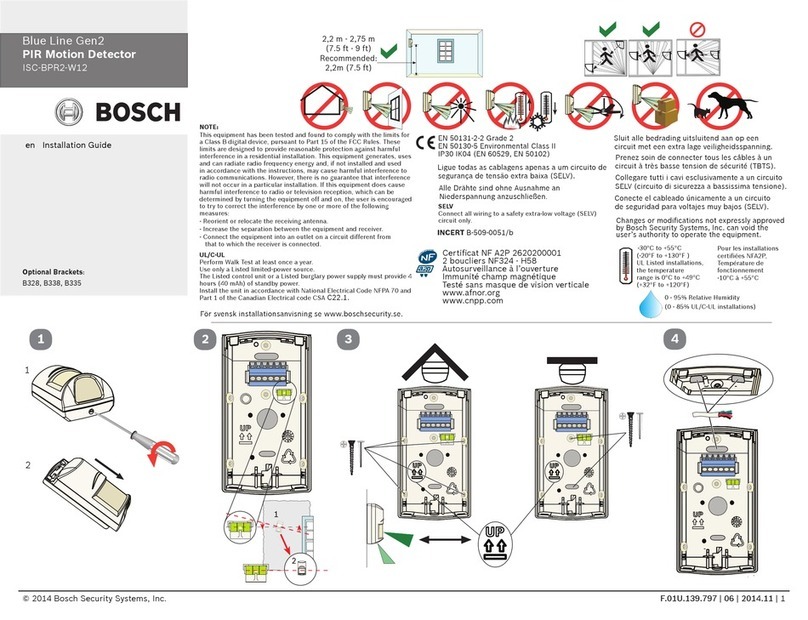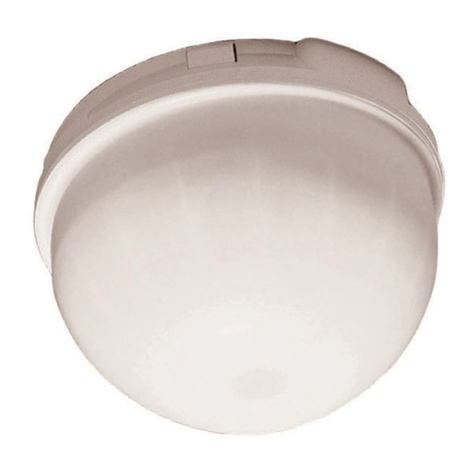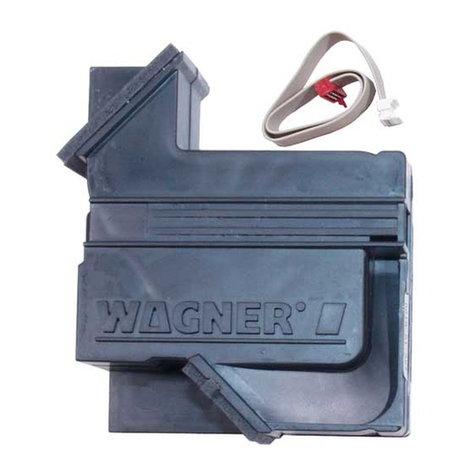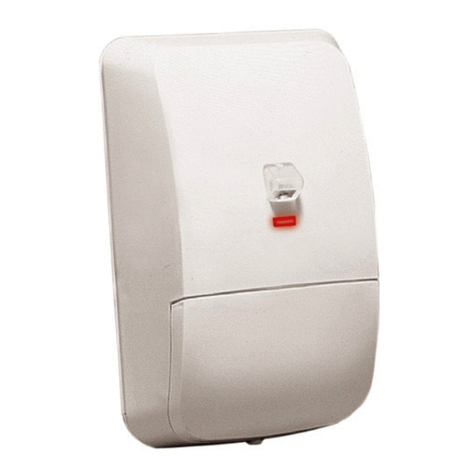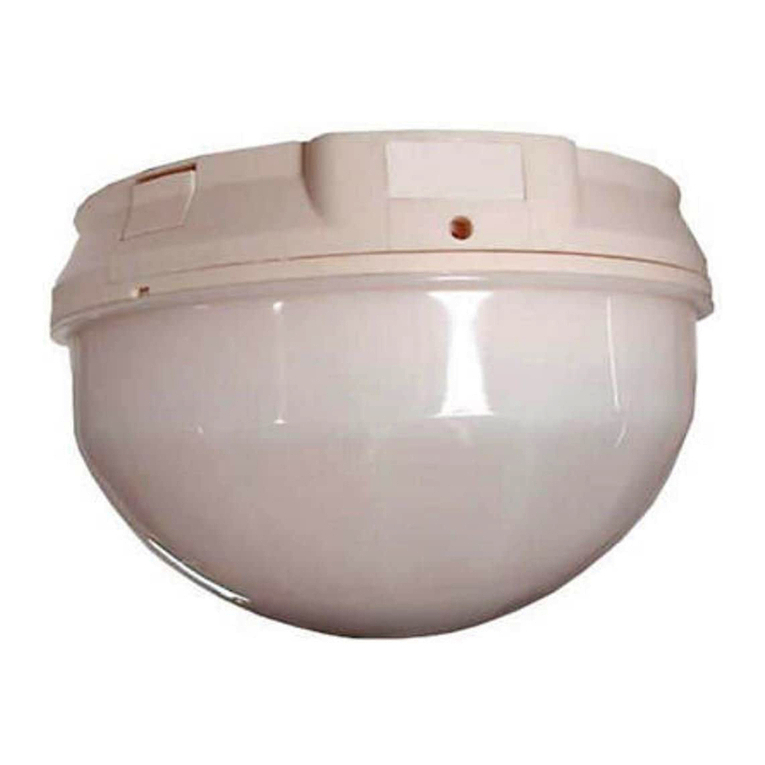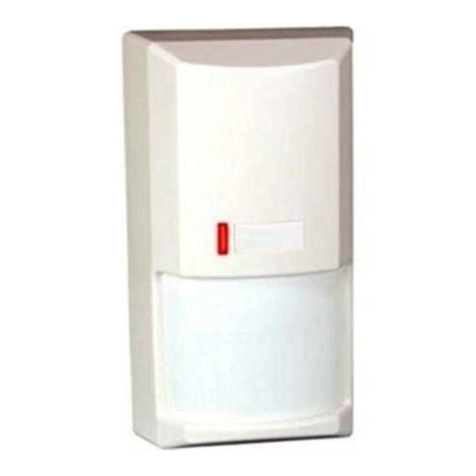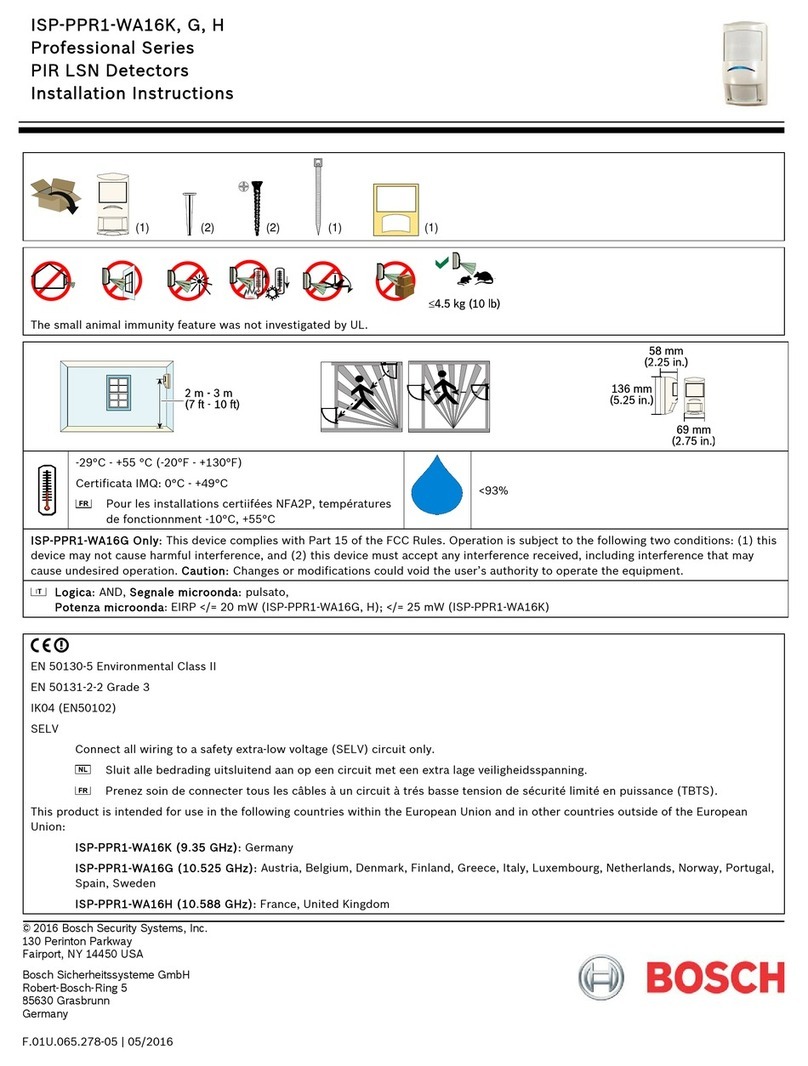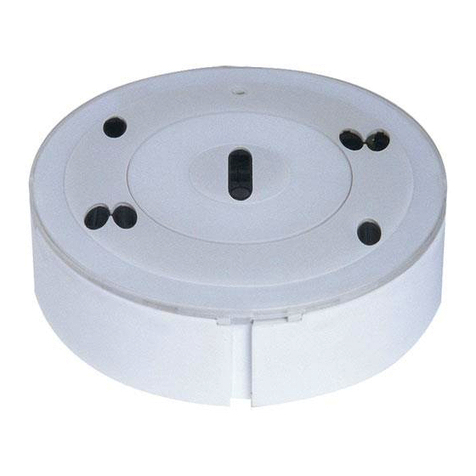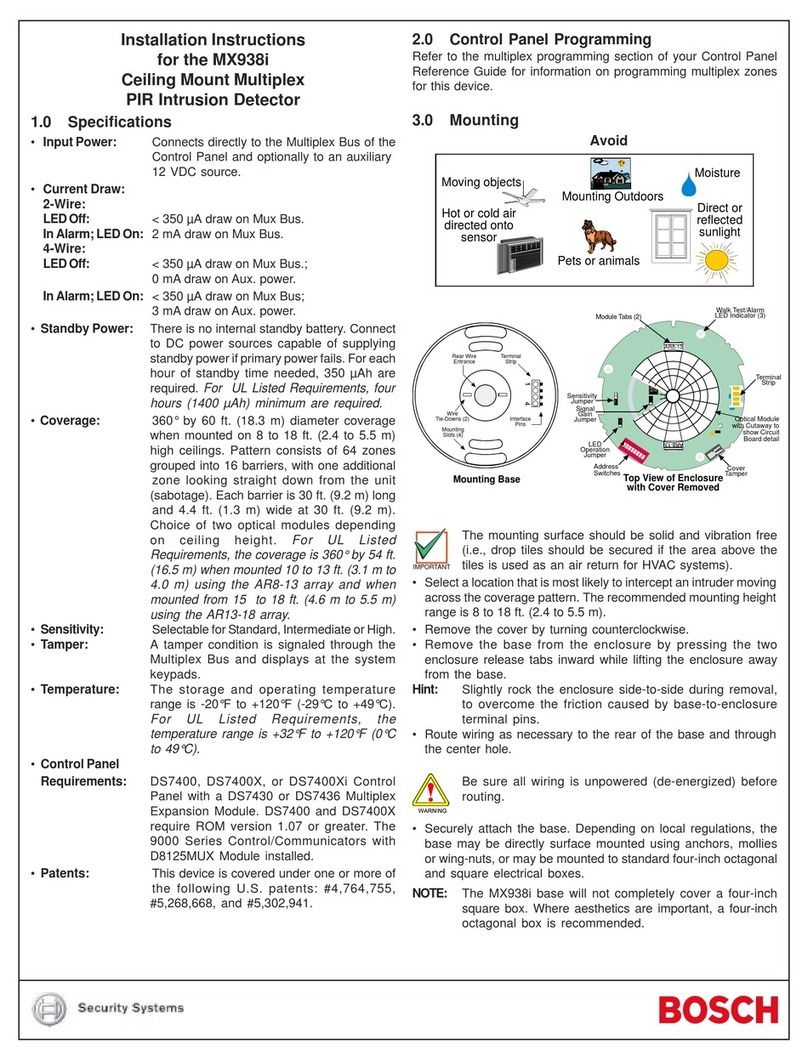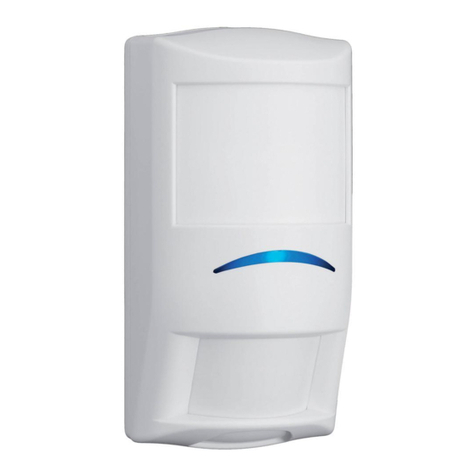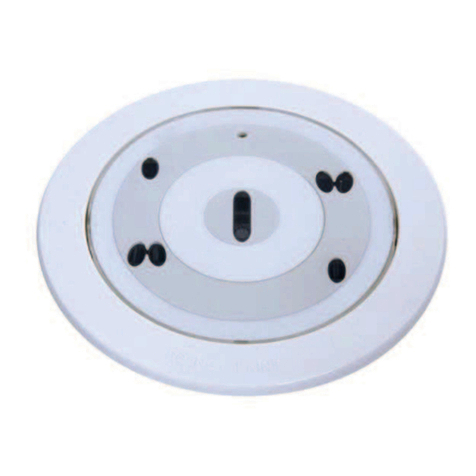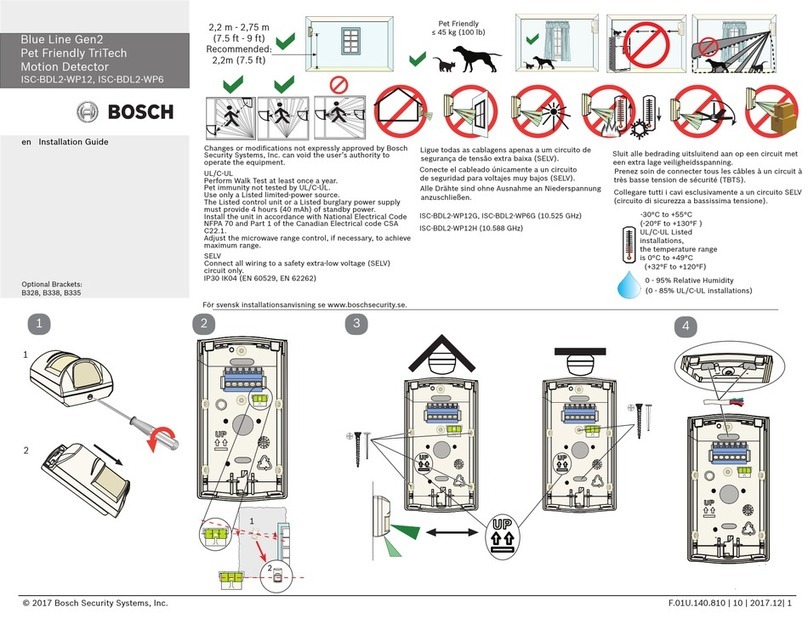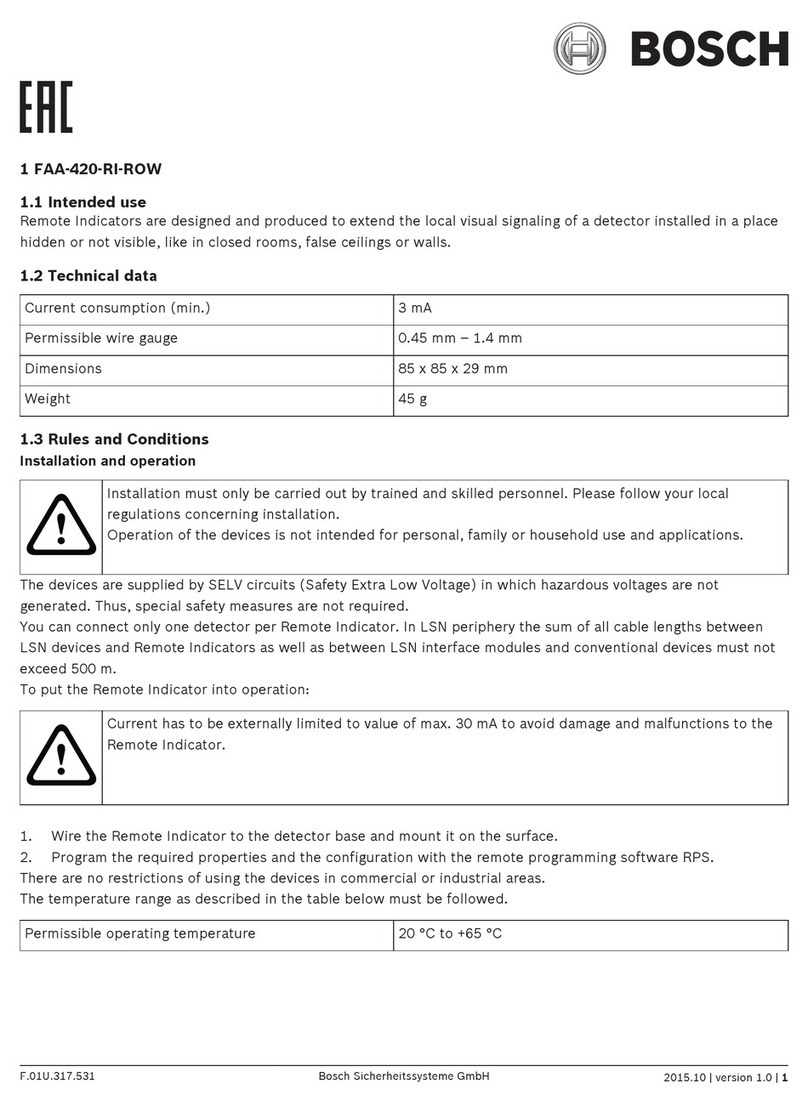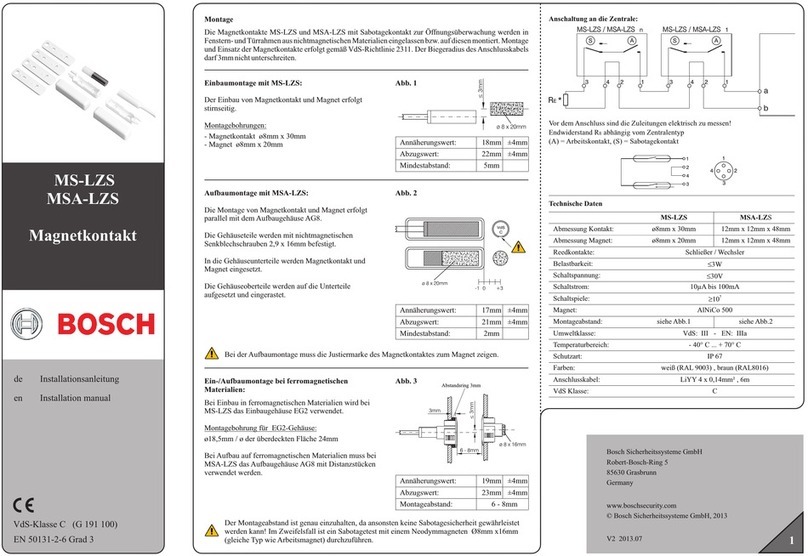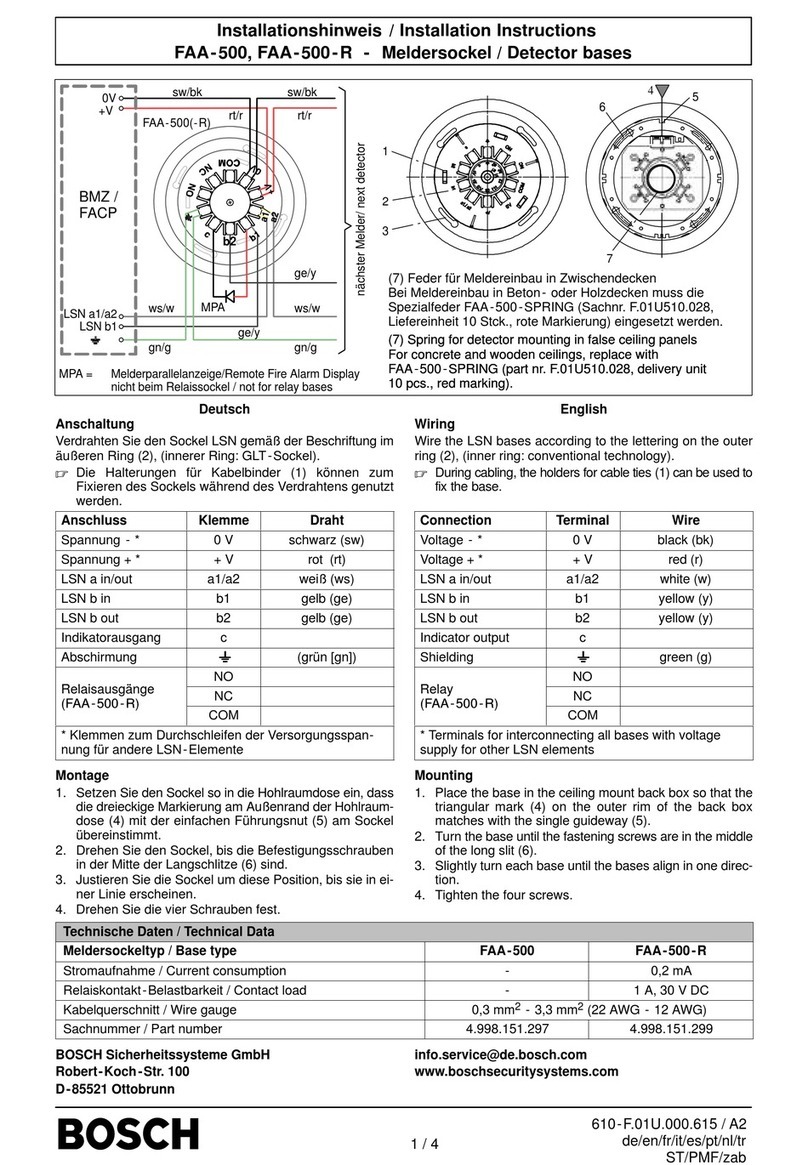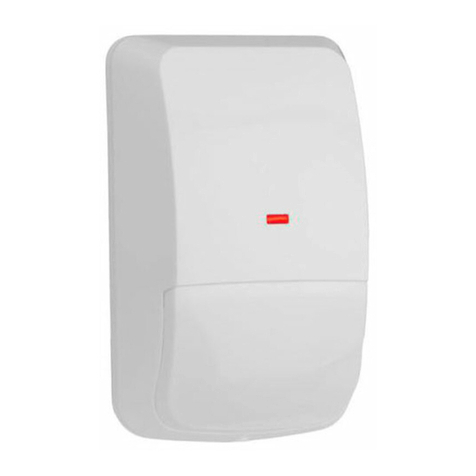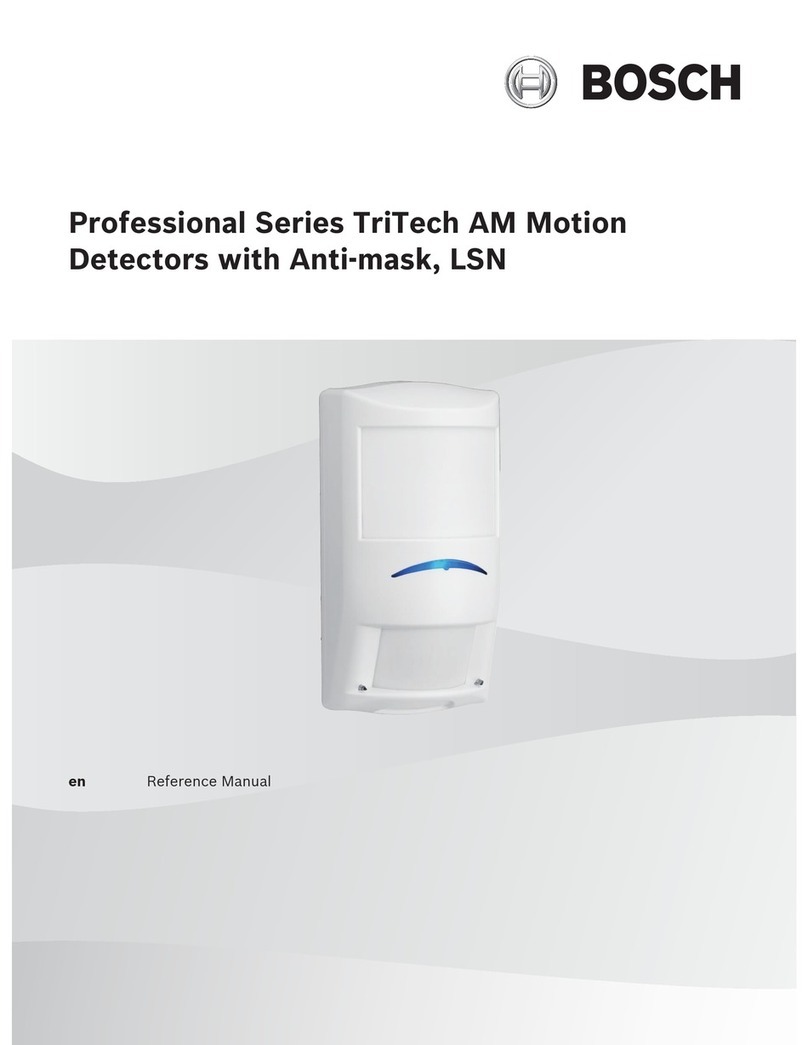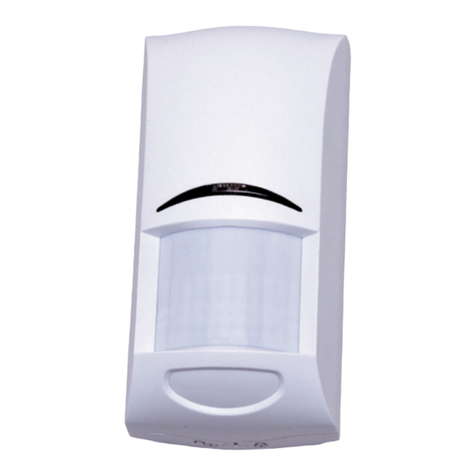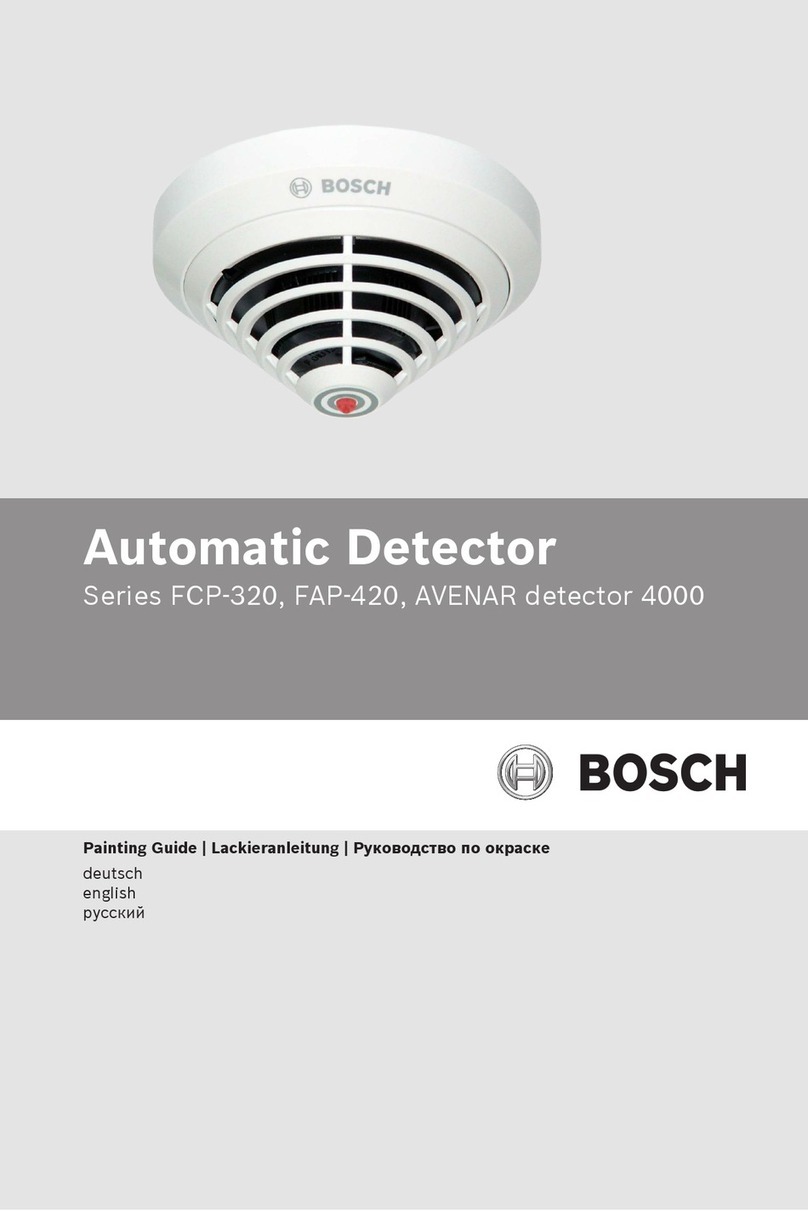© 2011 Bosch Security Systems, Inc. F01U069268 | 02 | 2011.10 | 2
Reading Bosch Security Systems, Inc. Product Date Codes
For Product Date Code information, refer to the Bosch Security Systems, Inc.
Web site at: http://www.boschsecurity.com/datecodes/.
Mounting the Detector
After verifying an acceptable location, permanently•
mount the detector. Use the two mounting holes in the
enclosure to secure it to the mounting surface.
Mount the detector and the Contact Magnet within 1•
in (2.5 cm) of each other. The Contact Magnet must be
mounted facing the side of the detector with the Sen-
sor Aperture. See Figure 3.6.
Magnet
Mounting Holes
DS1109i
Wall Tamper Sring
Knockout
Wire Knockouts
Sensor Aperture
Magnet
DS1109i
Magnet
DS1109i
6 Installing the Tamper Screw
Install the tamper screw as shown in Figure 6.1.
Do not mount the magnet so it covers the Sensor•
Aperture.
Avoid misaligning the detector and the magnet.•
5 Setting the Jumpers
The DS1109i has two jumpers located on the main board. P2
is used to allow the LED to latch on to a glass breakage alarm.
P3 is used to determine if the magnetic contact is used.
Remove the jumper from P2 if you do not want the LED•
to latch into alarm when a glass breakage occurs. The
relay contacts will only change state for approximately 3
sec upon a glass breakage alarm. The LED may be reset
by a momentary interruption of the power.
Remove the jumper from P3 if you want to use the mag-•
netic contact.
Latch
Jumper
Contact
Bypass
Jumper
P2 P3
-
+
NC C T T
7 Testing
Testing the Location
Temporarily mount the detector using 2-sided tape.•
Power the detector using a 9 Volt battery.•
The detector will enter the test mode for five min as•
soon as power is applied. The detector will indicate that
it is in the test mode by flashing the LED for 10 sec. At
the end of five min the detector will flash the LED again
for 10 sec to indicate the test period is over. The test
mode can be restarted at any time by powering the unit
off and then on or by pressing the Test Switch (see the
Board Layout drawing). Pressing the Test Switch when
the unit is in the test mode will terminate the test.
Test #1 Environmental Test
Remember: The detector must be in test mode to perform this
test. During the 5 minute test mode, the LED will indicate low
or high frequency disturbances by flashing at specific rates.
Occasional (random) flashes of the LED are normal. To rule out
random flashes affecting this test, observethe LED for the full
5 min.
Turn on all sources of noise (e.g. forced air blowers, air•
conditioners, compressor motors, etc.).
The LED will flash 5 times per second each time a low•
frequency disturbance is detected. If the 5 flashes per
second occur more than once every 15 sec or if the unit
alarms, then do not mount in this location.
The LED will flash once each time a high frequency•
disturbance is detected. If any flashes occur more than
once every 15 sec, do not mount in this location.
Remember: If the detector happens to alarm during this
test, the alarm relay will activate as well.
Test #2 Response Test
Remember: The detector must be in test mode to perform
this test.
This test should be performed using the DS1110i Glass Break-
age Tester. The DS1110i produces a high frequency tone
designed to alarm the unit to further verify proper location.
NOTICE!
Adjacent wall mounting is not recommended
for this detector.
CAUTION!
Don’t point the tester directly at your or any-
one’s ear. Doing so could damage hearing.
Hold the DS1110i Glass Breakage Tester against the•
window being tested and point it at the detector.If
there are curtains or blinds covering the window, close
them over the Tester. See Figure 7.1.
DS1110i Tester
Hold against window and
point at detector.
NOTICE!
The low frequency response of the detector can
be tested (while still in the test mode) by open-
ing a door about 1 inch and slamming it shut.
The detector should indicate an alarm.
Activate the tester. Setting the Tester to automatic•
mode causes it to activate every 6 sec. This will allow
you to better observe the detector’s LED.
For large windows, perform this test at different place-•
ments along the window.
The alarm/test LED and the alarm relay will activate for•
three sec if this is an acceptable detector placement.
NOTICE!
All testing should be done with the detector’s
cover in place.
Power Alarm Tamper
C
NC TT
Contacts shown with power on, no alarm
and Tamper Switch closed (cover on).
4 Wiring the Detector
Wire the detector as shown in Figure 4.1. Leave extra•
wire so the case can be opened for testing.
Magnet
DS1109i
During the last 10 sec of the detector’s test mode, its•
LED will pulse. To end the test mode before the 5 min-
ute time-out period, press the Test Switch.
Automatic Sound Check
This detector features Automatic Sound Check, to allow the
end user to test the unit on a periodic basis. To perform the
test, simply clap your hands or create some other loud sound.
When the detector hears this sound the LED (but not the alarm
relay) will activate. This feature works in the normal operat-
ing mode and does not require that the detector be in the test
mode.
It is recommended that a full Response Test (as outlined
above) and magnetic contact test (if used) be performed on an
annual basis.
Figure 3.5: Ceiling Mounting Without the Magnetic Contact
Figure 3.6: Mounting the Detector
Figure 4.1: Wiring the Detector
Figure 6.1: Installing the Tamper Screw
Figure 7.1: Test #2 Response Test
Figure 3.7: Alignment Caution
Figure 5.1: Setting the Jumpers



